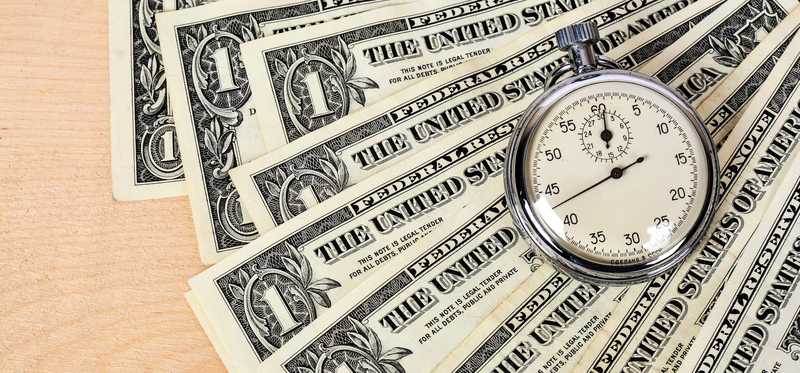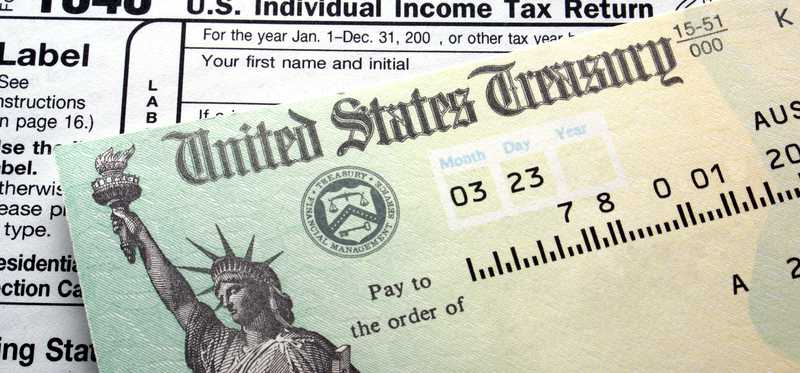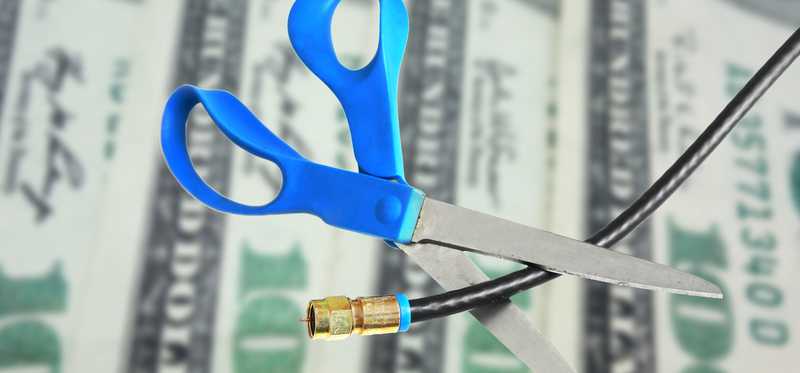25 Simple Ways to Save More for Retirement

25 Simple Ways to Save More for Retirement
Retirement comes up faster than you think
Whether you're 22 and just starting your first job out of college or 62, looking back on several decades in the workforce, retirement often feels too far away. But it comes up faster than you realize and you need to be prepared for it. With enough savings, retirement is a relaxing and enjoyable coda to a long life. Without enough money, it's a stressful time of tightening the belt and pinching pennies.
Make sure your retirement is comfortable by planning for it right now. Here are 25 ways you can start saving more money for retirement today.
Previous
Next

1. Start saving as early as you can
Your early retirement contributions matter so much more than your later ones because they have more time to sit in your account and grow. If you invested $1,000 in your retirement account this year and earned a 7% annual rate of return, that money would be worth almost $2,000 after 10 years. After 20 years, it would be worth closer to $4,000 and it would be worth more than $7,600 after 30 years.
Even if you can only afford to set aside $100 or less per month, it will still start to stack up over time. You're better off making smaller contributions now than waiting to begin saving until you feel you can make more substantial contributions.
ALSO READ: This Easy Saving Strategy Can Give Your Retirement Savings a Big Boost
Previous
Next

2. Automate your savings
When retirement savings are automatic, you're more likely to stick with them than when you have to remember to manually set aside funds from each paycheck and transfer them to your retirement account. Most 401(k)s give you the option to automatically withdraw funds from each paycheck and some IRAs enable you to set up automatic transfers from your bank account to your retirement account each month.
Previous
Next

3. Create a retirement plan
Many people aren't saving enough for retirement simply because they don't know how much they should be saving. Create a personalized retirement plan to get a sense of how expensive your retirement will be and how much you need to save each month in order to hit your goal. Then, do your best to stick to it.
Reevaluate your retirement plan at least once per year or when you experience a job change or when your retirement dreams or expectations change. This could change your retirement savings goal and it's easier to get there if you make small adjustments periodically rather than trying to come up with thousands of extra dollars as retirement approaches.
Previous
Next

4. Set aside a fixed percentage of your income
This strategy isn't as good as creating a custom retirement plan that takes your individual life expectancy and goals in mind, but it's better than not saving any money at all. If you haven't yet created a retirement plan or you find retirement planning overwhelming, fall back on saving a percentage of your income -- preferably at least 15% -- for retirement until you do come up with a solid personalized plan.
Previous
Next

5. Increase your contributions annually
A popular strategy for those who are unable to save as much as they'd like to for retirement is to save as much as you can right now and aim to increase your contributions by 1% of your salary every year. So if you earn $50,000 per year and your goal is to save $7,500 per year, but you can only save $5,000 this year, aim to save an extra 1% -- another $500 -- the next year. This comes out to around $42 extra per month.
These small increases shouldn't seriously strain most people's budgets, but keep in mind that if you aren't able to hit your retirement savings goal today, you might have to start saving more per month in the future to make up for the months where you were setting aside less.
Previous
Next

6. Take advantage of any 401(k) match
Some employers offer a 401(k) match to help employees more easily save for retirement. Some companies match you dollar for dollar, usually on up to 3% of your income, while others pay $0.50 for every dollar you contribute, typically up to 6% of your income. This is free money, so there's no reason not to take advantage of it unless you need all of your cash to cover your living expenses every month.
Watch out for the vesting schedule, though. This determines when your 401(k) match is yours to keep. If you leave the company before you're completely vested, you could forfeit some or all of your employer match. Check with your plan administrator or read your 401(k) plan summary to learn more about your company's vesting schedule.
Previous
Next

7. Increase your retirement contributions when you get a raise
Before you do anything else with your raise, increase your retirement savings. You won't miss this extra money because you aren't used to having it, and it will make a significant difference in your retirement savings over the long term.
Just be careful not to exceed your contribution limits for the year. You may contribute up to $19,000 to a 401(k) in 2019 and $6,000 to an IRA. Adults 50 and older can contribute extra. More on that later. Exceeding these limits will cost you a 6% excise tax on the excess amount every year until you take it out. Fortunately, if you realize you've overcontributed, you can remove the extra money before you file your taxes without penalty.
Previous
Next

8. Ignore your raise
If you want to take the previous tip to the extreme, pretend that you never received your raise and continue living on your normal salary. Place all of your additional earnings into your retirement account and watch your savings begin growing rapidly. But again, be mindful of the contribution limits so you don't exceed them.
Previous
Next

9. Choose the right type of retirement account for you
Retirement accounts fall into one of two camps: tax-deferred or Roth. Contributions to tax-deferred accounts, including traditional IRAs and most 401(k)s, reduce your taxable income for the year, but then you must pay taxes on your distributions in retirement. Roth accounts work the opposite way. You don't get a tax break on your contributions this year, but afterward, your savings grow tax-free.
Tax-deferred accounts are usually better if you think you're in a higher tax bracket today than you will be in in retirement while Roth accounts make the most sense if you think you're in the same or a lower tax bracket now than you'll be in in retirement. Choosing the right account for your savings is crucial because it will reduce how much you lose in taxes overall. You can save in both types of accounts, but most people tend to favor one over the other.
ALSO READ: The Shocking Number of Americans Without a Retirement Account
Previous
Next

10. Open an IRA
Those who've maxed out their 401(k) for the year or those whose employers don't offer a 401(k) should start stashing their savings in an IRA. While its contribution limits are lower than 401(k) limits, IRAs offer greater freedom to invest your money how you choose and the fees are typically lower. This can help you grow your money more quickly than you could in an expensive 401(k).
Previous
Next

11. Try to reduce your account fees
All retirement accounts charge fees, but how much depends on your plan. There are administrative fees for things like recordkeeping and account rollovers, and then there are the fees your investments charge, like the expense ratios on mutual funds. Some of these fees are set dollar amounts, but most are a percentage of your assets. Try to avoid paying more than 1% of your assets in fees if you can. A 1% annual fee means you'll pay $10,000 on a $1 million portfolio and you'll keep paying that 1% every year you have the account.
You can figure out how much you're paying in fees by checking your investment prospectus or your 401(k) plan summary. Talk to your employer about offering more affordable investments, like index funds, if you're paying too much. If your employer refuses, consider moving your money to an IRA unless you're getting a 401(k) match that covers your fees.
Previous
Next

12. Take advantage of catch-up contributions
Adults 50 and older are allowed to contribute an extra $6,000 to a 401(k) in 2019 and $1,000 to an IRA. If you got a late start on retirement savings, these higher limits may help you close the gap between what you have and what you need.
Retirement account contribution limits can change from year to year, so keep an eye on this if you plan to max out your accounts. You might be able to set aside even more next year than you can this year.
Previous
Next

13. Open a health savings account (HSA)
Most people don't think of a health savings account (HSA) as a retirement account because that's not what it was designed for, but it actually offers even more tax advantages than a 401(k) or IRA. Individuals can contribute up to $3,500 to an HSA in 2019 and families may contribute up to $7,000. Adults 55 and older may contribute an extra $1,000 per year. Your contributions reduce your taxable income this year and if you use the money for medical or dental expenses, you don't pay any taxes on it at all. You can also use the money for non-medical expenses, but then you'll pay income tax, plus a 20% penalty, though the penalty goes away at 65, at which point your HSA becomes more like a traditional IRA.
You must have a high-deductible health insurance plan in order to open an HSA. This is defined as one with a deductible of at least $1,350 for an individual or $2,700 for a family. Some employers who offer high-deductible health insurance plans enable you to automate contributions to an HSA like you would to a 401(k).
Previous
Next

14. Claim the Saver's Tax Credit
The Saver's Tax Credit is a government incentive to encourage people to set aside money for their retirements. The amount of the tax credit depends on the size of your contribution, your income, and your tax filing status. It's worth up to $1,000 for single adults or $2,000 for married couples filing jointly.
Tax credits are a dollar-for-dollar reduction of your tax bill, so if you owed the government $3,000 in taxes for the year and you qualified for a $1,000 Saver's Tax Credit, you'd now only owe the government $2,000 for the year and any extra you paid in would come back to you in the form of a tax refund, which, as the next tip suggests, you can put toward your retirement savings.
Previous
Next

15. Set aside year-end bonuses and tax refunds for retirement
Put your year-end work bonuses, tax refunds, and any other unexpected windfalls toward your retirement savings. This is a simple way to set aside a few hundred to a few thousand dollars toward your retirement without throwing off your budget.
You should be able to put yearly bonuses into your 401(k) if you'd like, but tax refunds and other windfalls will have to go into an IRA, HSA, or taxable brokerage account because only funds you've earned from your job can go into your 401(k).
Previous
Next

16. Reduce your spending
Look for areas where you can rein in your spending to free up more cash for retirement saving. Dining out and coffees at your favorite coffee shop are an easy place to start, but you should also look for subscriptions you no longer use, grocery items you buy and don't eat, and any other area where you realize you spend more money than you should. Create a budget if you don't already have one to help you track your spending and use this as your guide when deciding where you should cut back.
Previous
Next

17. Save your coins
While it might not add up to much, some people prefer to save all their coins in a change jar and then cash it in when it's full. But rather than spending that money, you could put it toward your retirement account instead. Depending on how avid you are about collecting change, this could amount to an extra $100 per year or more.
Previous
Next

18. Pay down your debt
Debt, especially high-interest credit card debt, cripples your ability to save for your long-term goals like retirement. Paying this off will free up a lot more money you can put toward your future. There are different approaches to this.
If you only have a small amount of debt, consider foregoing retirement savings for a couple of months in favor of throwing all of your extra cash at your debt. Once that's paid off, you can start saving even more for retirement. Or if you have a lot of debt, you can split your extra cash between retirement savings and debt repayment each month.
Previous
Next

19. Keep your emergency and short-term savings separate from your retirement savings
The federal government allows you to borrow from your retirement accounts, but it'll cost you. Most of the time, you'll pay a 10% early withdrawal penalty if you're under 59 1/2, but there are exceptions to the rule for large medical expenses, educational expenses, first-home purchases, Substantially Equal Periodic Payments, and more. You can also take loans from your 401(k) without penalty as long as you pay back what you borrow with interest.
But even a 401(k) loan could end up costing you money because the amount you're required to pay back might be less than the interest you would have earned if you'd left the money alone. Rather than risking penalties, keep your emergency savings and short-term savings in a savings account instead of stashing everything in your retirement account.
Previous
Next

20. Seek ways to boost your income
Side hustles are a popular way for people to earn a little extra cash, but you could also increase your income via more traditional means like working overtime, pursuing promotions, or changing fields. Put any extra income you receive toward your retirement savings.
If you're doing any work as an independent contractor or a self-employed worker, don't forget to set aside money for taxes first before you put your extra cash toward retirement or you could be in for a surprise come tax time. Your prior-year tax return should tell you how much you must pay in each quarter if you were also self-employed last year. Otherwise, you can use this calculator to estimate how much you'll owe.
Previous
Next

21. Work longer
Though not the most popular solution, one of the easiest ways to save more money for retirement is just to give yourself more time to save by extending your years in the workforce. This might be the only way you can afford to retire comfortably if you've neglected your retirement savings for many years.
Previous
Next

22. Consider downsizing
Housing is most people's largest expense whether they're working or retired. Moving to a smaller home or a more affordable area can reduce these costs, leaving you more money to put toward retirement. Making this move before retirement will help you the most because it'll free up more cash today and it'll reduce your living expenses in retirement too.
Before you make a move like this, make sure that downsizing will actually save you money. If housing costs have risen considerably in your area since you purchased your current home, you might find a smaller home to be just as, if not more expensive than remaining in your current home. In that case, you're probably better off staying where you are.
ALSO READ: Fewer Older Americans Are Downsizing Their Homes, Data Shows
Previous
Next

23. Keep your assets well-diversified
No matter what your goal, if you're investing money, you need to keep it well-diversified between different types of investment products, like stocks and bonds, and different sectors, like energy and technology. This reduces your risk of losing a substantial portion of your retirement savings or seriously hampering its growth.
Imagine that you had all of your money invested in a single stock that suddenly plummeted. Even if it eventually comes back up, you've just lost years of growth potential. But if that stock only accounted for a small percentage of your total portfolio, you haven't cost yourself that much money because your remaining assets can help pick up some of the slack.
Previous
Next

24. Don't invest too conservatively
Conventional wisdom says you should move more of your money from volatile, but potentially lucrative investments like stocks to more stable, though less profitable, investments like bonds as you near retirement. This is sound advice, but you don't want to go overboard and potentially limit your portfolio's growth.
The old rule used to be that the percentage of your savings that should be invested in stocks was equal to 100 minus your age. So if you're 40, you should have 60% of your money in stocks and 40% in bonds. But as people live longer, 110 minus your age or 120 minus your age is a better benchmark because your savings have to last you longer and stocks are capable of generating more income for you than most bonds.
Previous
Next

25. Get personalized advice from a financial advisor
Financial advisors manage people's money for a living and they know the best tricks for growing your savings. You have to pay for their services, but this is usually worth it in the long run because they can help you come up with an accurate retirement plan, choose the right investments, and think up new savings strategies you may not otherwise have thought of.
Choose a fee-only financial advisor whenever possible instead of a fee-based advisor. Fee-based advisors earn commissions when you buy certain investment products from them, and this could cause them to recommend things that will earn them a profit but may not be in your best interest.
Previous
Next

Start saving today for a bright future
No tip on this list will appeal to every person, but even if you pick just a couple, you can make a significant difference in your retirement savings over time. Try a few and see which ones work best for you. If you ever feel tempted to stray from your plan, just remind yourself what that money is for and how important it is.
The Motley Fool has a disclosure policy.
Previous
Next
Invest Smarter with The Motley Fool
Join Over Half a Million Premium Members Receiving…
- New Stock Picks Each Month
- Detailed Analysis of Companies
- Model Portfolios
- Live Streaming During Market Hours
- And Much More
READ MORE
HOW THE MOTLEY FOOL CAN HELP YOU
-
Premium Investing Guidance
Market beating stocks from our award-winning service
-
The Daily Upside Newsletter
Investment news and high-quality insights delivered straight to your inbox
-
Get Started Investing
You can do it. Successful investing in just a few steps
-
Win at Retirement
Secrets and strategies for the post-work life you want.
-
Find a Broker
Find the right brokerage account for you.
-
Listen to our Podcasts
Hear our experts take on stocks, the market, and how to invest.
Premium Investing Services
Invest better with The Motley Fool. Get stock recommendations, portfolio guidance, and more from The Motley Fool's premium services.